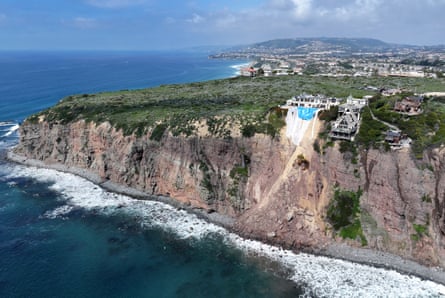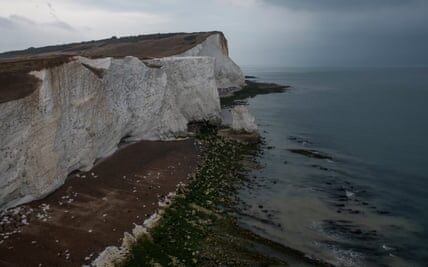California’s high-end cliff-top homes are at risk due to the heavy rainfall.
Heavy rainfall in southern California is causing significant impact on cliffs that support the state’s priciest properties. In the first two months of this year, the region has experienced almost 18 inches of precipitation, which is 8 inches higher than the usual average for this time period. Additionally, more rain is expected in the coming week.
Governor Gavin Newsom of California has announced a state of emergency in eight counties encompassing a population of over 20 million people. Additionally, warnings for flash floods have been issued in select areas of Los Angeles, Santa Barbara, and San Luis Obispo counties.
Wealthy residents living in coastal cities like San Clemente and Dana Point closely monitor the threat of landslides caused by severe storms, as their multimillion-dollar houses cling precariously to cliffs. Alan Ashavi, a homeowner, shared with Reuters that he diligently inspects his property each day, following concerns about his swimming pool possibly collapsing.
Funds to safeguard California properties from the effects of the climate crisis, such as severe storms, rising sea levels, and landslides, will ultimately be provided by the state. This includes expenses for disaster relief programs and insurance coverage subsidized by the state, which will impact all residents, regardless of their involvement with high-end homes. A large percentage of Latino and Black households in California do not possess ownership of their homes.
According to the Los Angeles Times, approximately $150 billion worth of properties in California could potentially face damage from coastal flooding and erosion by the year 2100. This poses a significant financial burden for the state, which will likely have to secure stable insurance fees and cover the expenses of reconstruction in the aftermath of natural disasters.
Certain cities are promoting a tactic referred to as “managed retreat,” which involves relocating away from the coast due to the ever-changing shoreline and environment.
However, in certain areas like Pacifica, individuals were obliged to relocate their residences in a hasty manner in 2016 due to the demolition of twelve unsafe homes on the cliffs. Ultimately, this amounted to a cost of $16 million, which was unfortunately borne by the public.

Home insurance in areas prone to wildfires is already a concern. In 2023, seven out of the twelve insurance providers in California, accounting for 85% of the market, have decided to stop accepting new properties in these regions due to the risk of wildfire. As a result, homeowners are left with the expensive option of purchasing a Fair plan directly from the state as a final alternative. There is ongoing discussion about the appropriate level of risk for homeowners living in hazardous areas.
The issue of funding climate-related disasters and insurance is not only limited to California, as other states like Louisiana, Florida, and Texas are also considering solutions.
According to Newsom in an interview with Politico, the effects of the climate crisis will likely become widespread and increasingly severe. Despite a proposal last fall to address the issue, it ultimately failed in private discussions.
Money is becoming more constrained, even within the government. For instance, Joe Biden had to request additional funds from Congress in order to contribute to the Disaster Relief Fund last autumn, after it was depleted due to providing assistance for disasters.
A specialist forecasts that sea cliffs will be destroyed by 100 meters in the near future, posing a threat to numerous multimillion-dollar residences.
Kathleen Treseder, a climate change expert from the University of California at Irvine, explained to Reuters that the rainwater from atmospheric rivers originating from the oceans causes erosion on the nearby hills.
“In addition to wave erosion, we are also experiencing inland erosion due to precipitation.”
Source: theguardian.com


